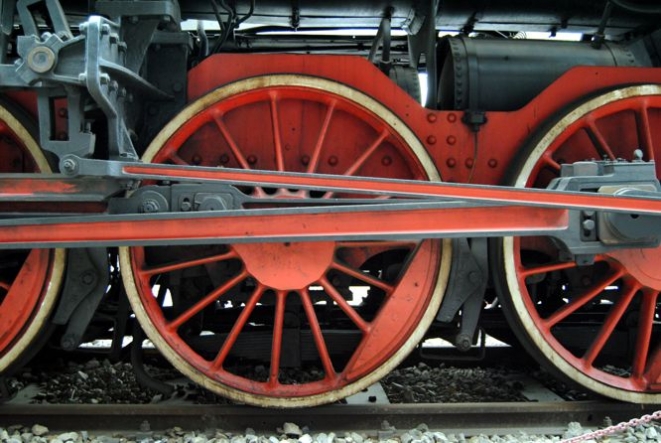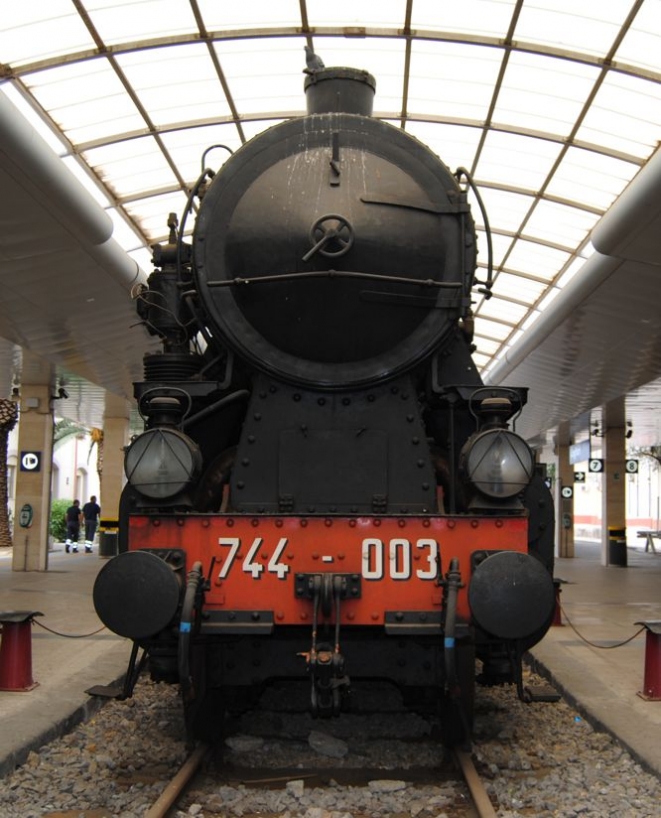The Sardinian Rail Museum: a station into a museum
Common things shown in an unusual museum
Passion and respect towards common things, that belong to the trainman’s life and to his daily job, represent the basic feelings for the building of a museum out of the ordinary, as the Sardinian Rail Museum in Cagliari. The preservation of items with a big quality is important for the protection and the recovery of elements that, otherwise, would be excluded and lost.
Instituted in 1985, the Museum was born thanks to the idea of the District Director of that period, Antonio Sanesi, who, passionate about rail industry archaeology, loved collecting proofs of the past that were spread everywhere in the stations, in order to salvage things considered important by him and he wanted that they became important for other people, too. So, he allowed to know those evidences, setting up an exhibit into the City of Museums in Cagliari, in 1983. This event was appreciated so much so they decided to give it a concrete visibility, making it permanent through the building of the Rail Museum, that now is managed by Trenitalia and Rete Ferroviaria Italiana.

Ordinary things with a common use, from the whole Sardinia, became artworks with an inestimable value: a telegraph from Bonorva Station, a bench of the waiting room from Abbasanta Station, a scale of 1887 and one of 1895, the tachograph of a diesel locomotive, through which the data of the journey of the locomotives and their speed were recorded on the graph paper.
That speed had and has not to be larger than 130 Km/h, a tricycle with pedals for the surveillance of the line, a salon of a royal wagon, an oil lamp, an acetylene lamp, a hand railsaw. They considered fundamental to search these goods and to gather them in their context for a matter of homogeneity. A bench, whose iron back shows relieves of rural activities typical of four seasons, was one of the first examples of industrial production.
It is excellent an ancient telephonic device with many lines, too, and, once, it was used in Villamassargia Station. There is the exhibition of a thermometer, too, used for measuring the temperature of the rail. Furthermore, there is a machinery of centralized control, set up in Chilivani in 1973, the first machinery of remote control in Italy on line with one rail, for managing and driving railroad switches, levels crossing and signals of the stations linked to it. A young boy of these days, seeing them, would consider them "space age things".

They are things that belong to different branches: drive, movement, circulation of trains, maintenance of rails; proofs of how workers worked in the past and how they work today. Together, the things of the same kind have an unique value. Cagliari Station houses another important piece of the Museum, too: the locomotive 744.003, built in 1928 of which fifty samples were produced. Only two of them survived from the oxyhydrogen flame: one is present in Cagliari Station and the other in the warehouse of the historic tools of the FS in Pistoia, managed by the Foundation FS, established recently, and it works for the protection, the management and the custody of all the historic tools of the rail system. The maximum speed of this locomotive was 80 km/h.
In the whole period of its existence, the Museum was always open for "Open Monuments", an yearly event organized in Cagliari in May and, by demand, for guided tour of students and of groups, more or less numerous, of lovers of history of railways, too. Then, the Association Sardegnavapore born in 2000, and composed by volunteers, had the quality of having put in contact lovers of rail branch or lovers of rail hobby modeling. «Promoting, valuing, maintaining the heritage and the historical memory of the railways of Sardinia», this is its mission.
Born for carrying on the Sanesi’s job, this group, that works about the management of the Museum and of the company of the visitors, too, brought back to the top lots of unique things of the rail activity, for allowing a greater visibility and spread of the historical heritage of the Railways of the Island, born in 1863 as Royal Society of Sardinian Railways and since 1920, managed by the Railways of the Government. The members of the Association, above all, have the merit of having put back in order an old steam locomotive, the 740.423 built in 1923. Five years of hard work for renovating a vehicle of drive of almost 980 HP of strength, that not only was fixed, obviously thanks to the collaboration of the specialists of Trenitalia for the more specialized part, but it was moved and let travelled, and today carries one hundred of passengers on board of wagons of Thirties, built on frameworks of 1909 and 1910, that only old people knew, when the circulation was usual.
The stages of these beautiful excursions were: Carbonia, Iglesias, San Gavino, Oristano, Macomer and Golfo Aranci and surroundings, as different mining places of Iglesiente or the famous "Sartiglia" in Oristano, for mentioning the most important.
The willpower and the enthusiasm made possible an initiative like this one, guarantee of maintenance, history and tradition. Visitors are always a lot and the activity of research of new things to show into the Museum is always deeper, because new things come continuously and they develop the museum collection and they make it unique, extraordinary and unusual.
Museo Ferroviario
Via Sassari, 24
At Trenitalia Station
09100 Cagliari
http://web.tiscali.it/sardegnavapore/museo.htm
The museum is open on request, with guided tours for schools and small groups
To book call the numbers
070-6794715 or 070-6794512